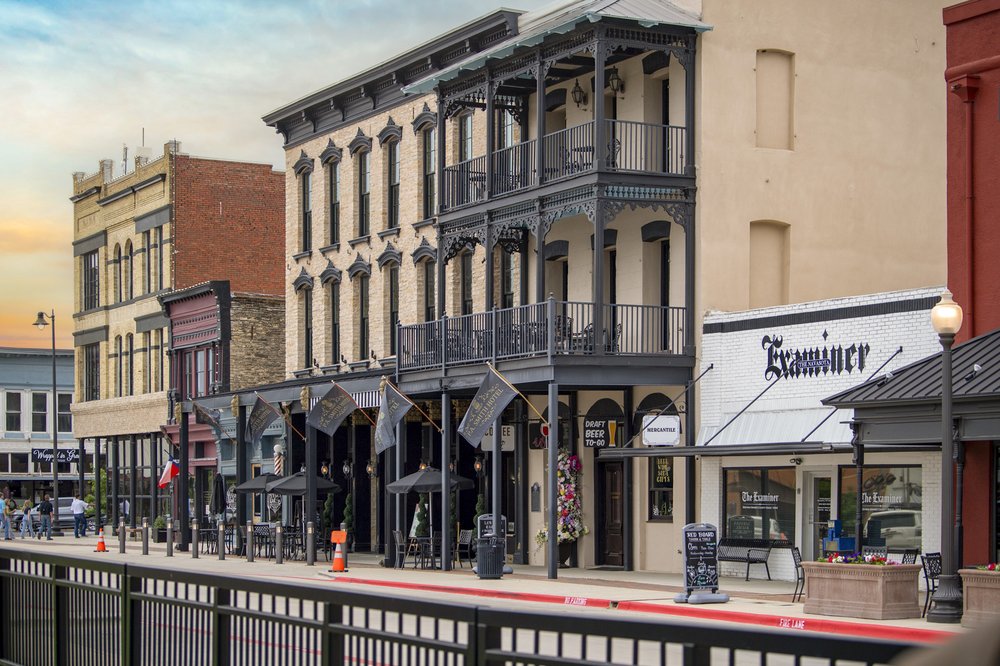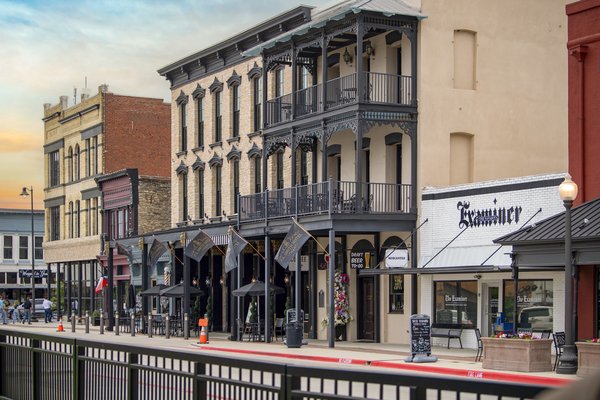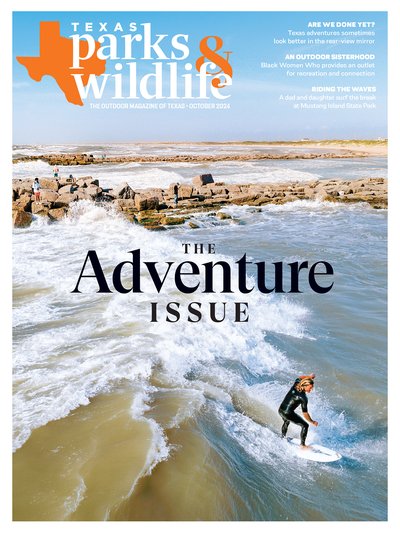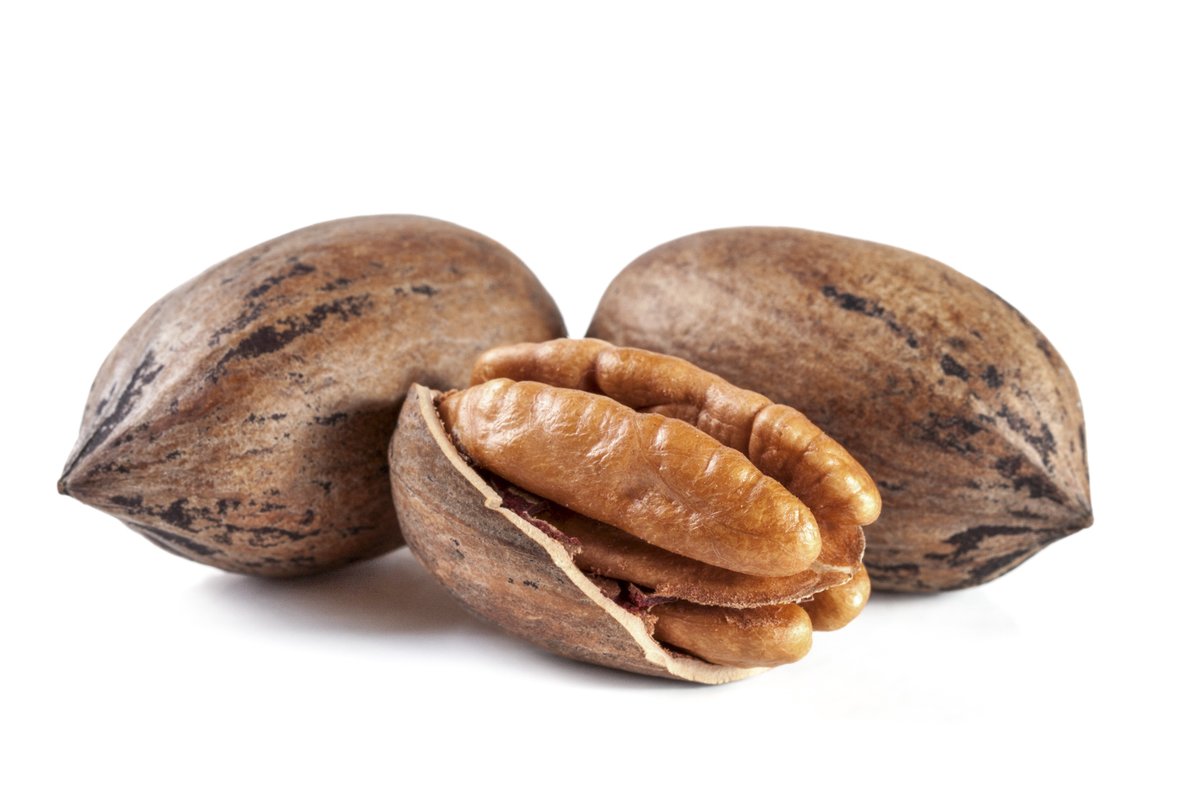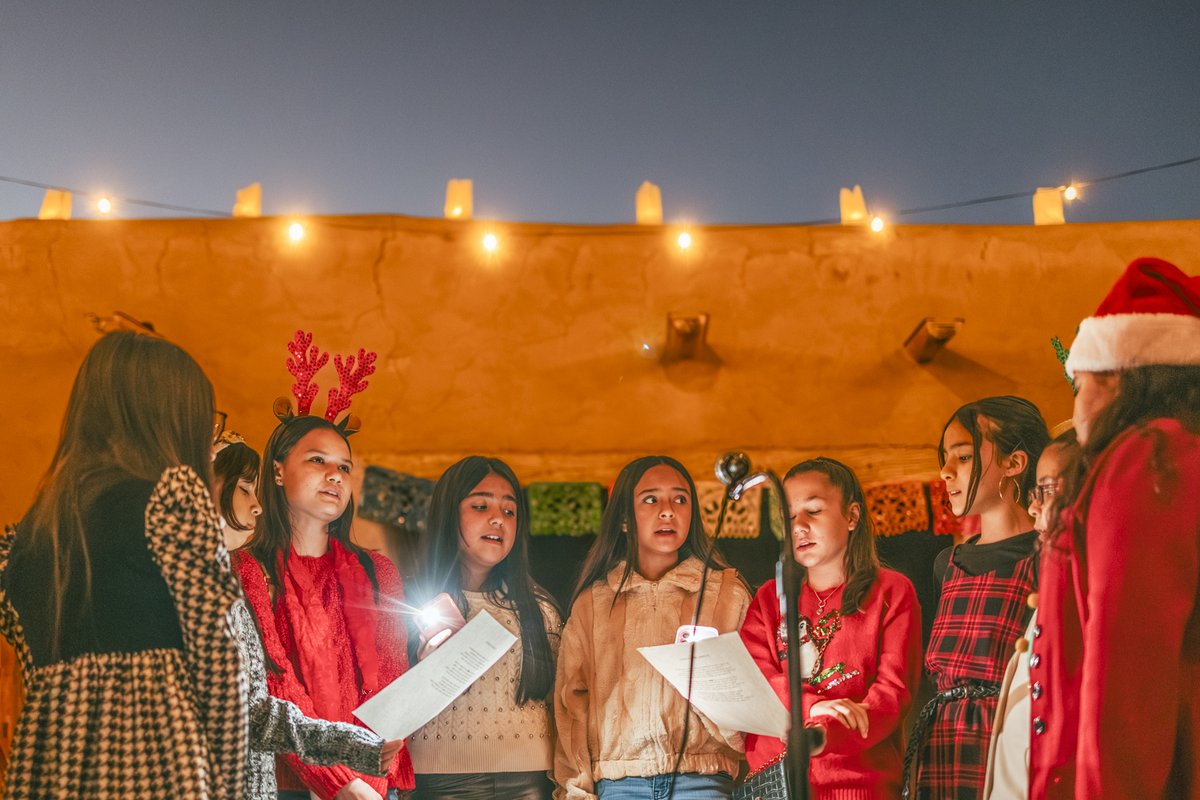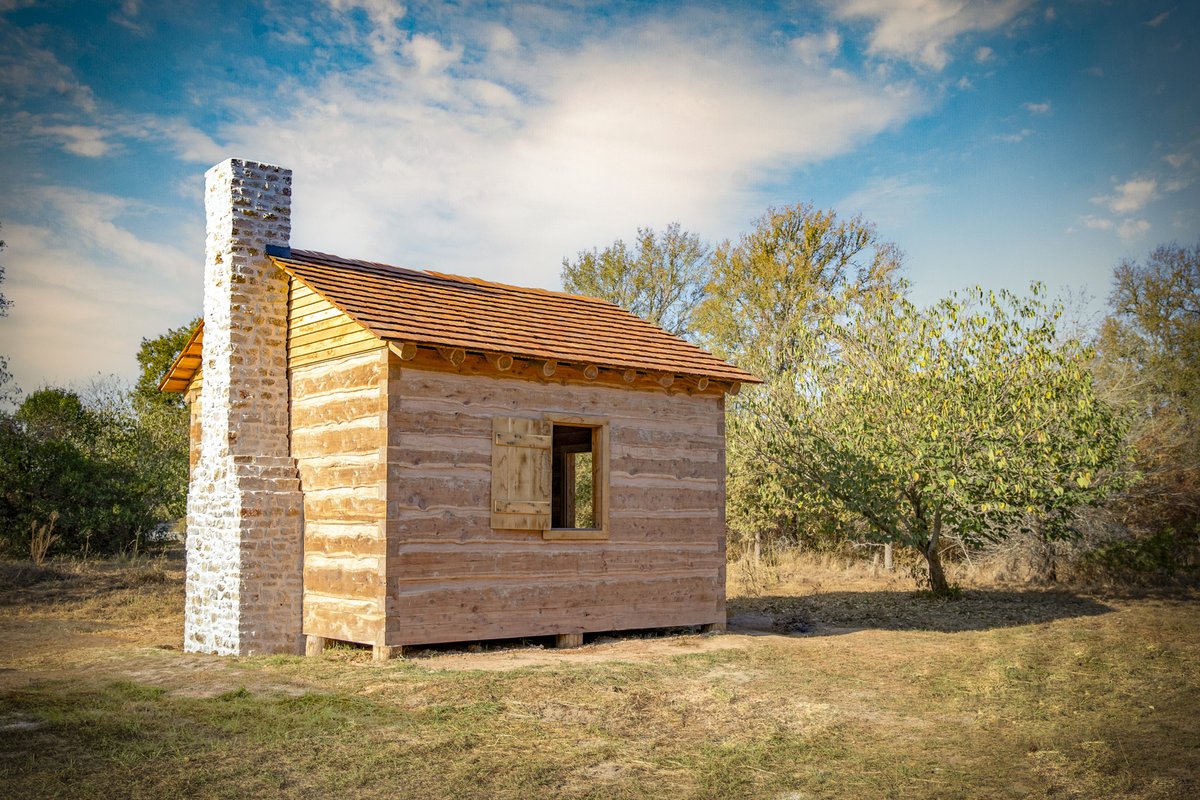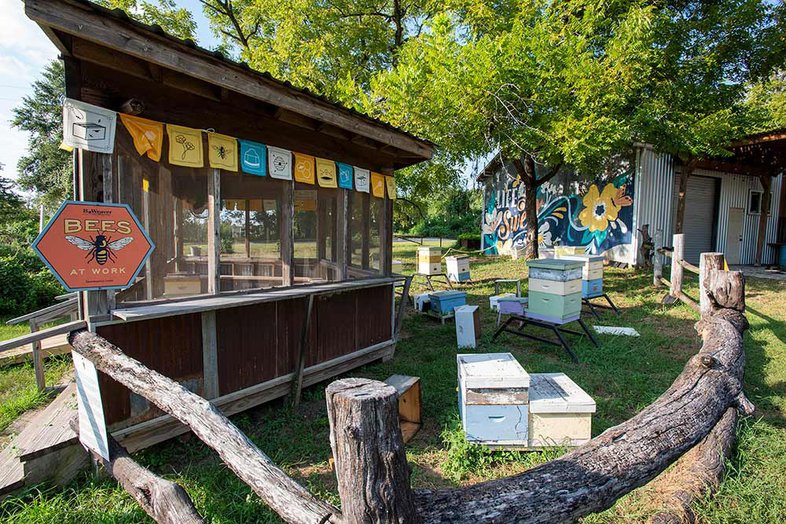
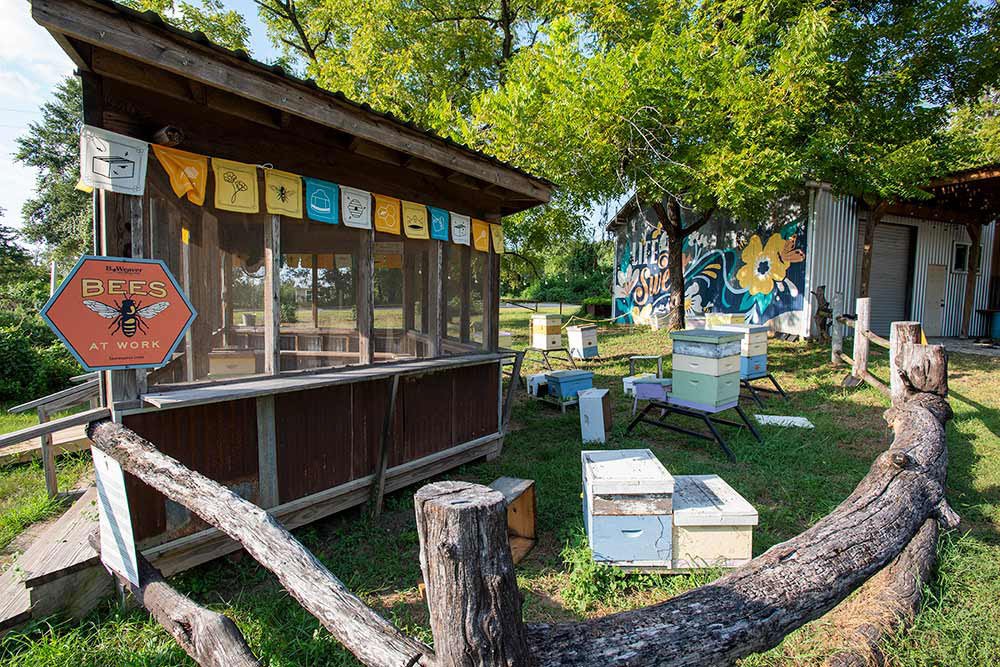
Beeweaver Honey Farm
Beeweaver Honey Farm
A SIGN ALONG Highway 6 into Grimes County once declared, “Navasota, The Land Flowing with Milk and Honey!” In late spring, vanilla-colored blooms light up the county's copious linden trees, bringing prosperity to beekeepers. Milk, too, was once found in abundance here. In the mid-1980s, more than 60 family dairies called Grimes County home (the last of those closed its barn doors for good in 2022, driven out of business by larger operations). Though the sign was taken down years ago, visitors to Navasota don't have to look hard to find traces of the town's historic glory.
Traditions are certainly alive and abuzz at the Beeweaver Honey Farm on the southern edge of Navasota, where the Weaver family has produced its liquid gold since 1888. In 1994, they began selectively breeding their bees to withstand disease and other threats. By 2000, the operation was able to cease the use of pesticides because of the hardiness of its bees. Although it is no longer at peak production, the apiary has become a destination in its own right for travelers who can tour the facilities, stay at the onsite glamping tents, drink mead at partner business WildFlyer Mead Co., and taste the wildflower honey ice cream concocted by farm manager Brandi Williams, a former pastry chef.
Beekeeping is one of many historically influenced practices being carried on by present-day Navasotans. In the last decade, the town has become a tourism hub at the western edge of the pine curtain by embracing the extravagance (and depravity) of its past. Navasota has restored much of its historic downtown, especially the once-seedy strip that overlooked the town's railroad. The railroad is central to the town's identity, and Navasota is one of a handful of Texas towns with the Union Pacific railroad's Train Town USA designation, which highlights cities with an important historical connection to the railroad. You can still hear the horns blare frequently as trains pass through Navasota some 30 times per day. When the railroad came to Navasota in 1859, it brought riches — and, ultimately, infamy.
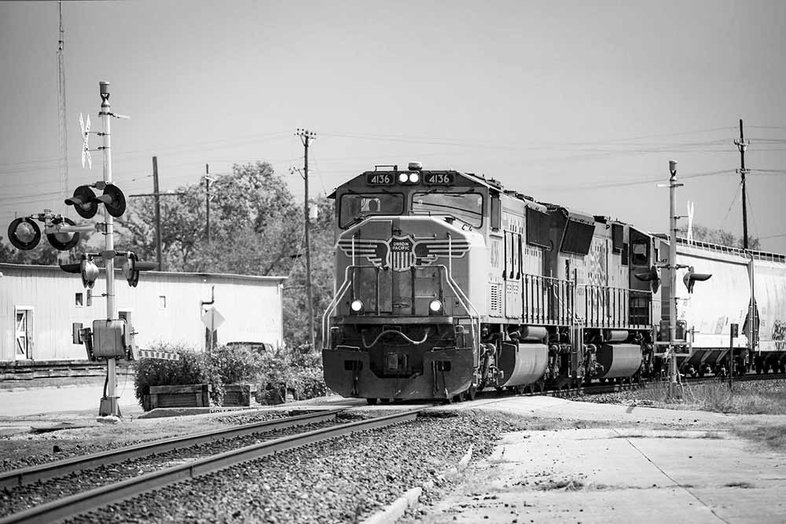
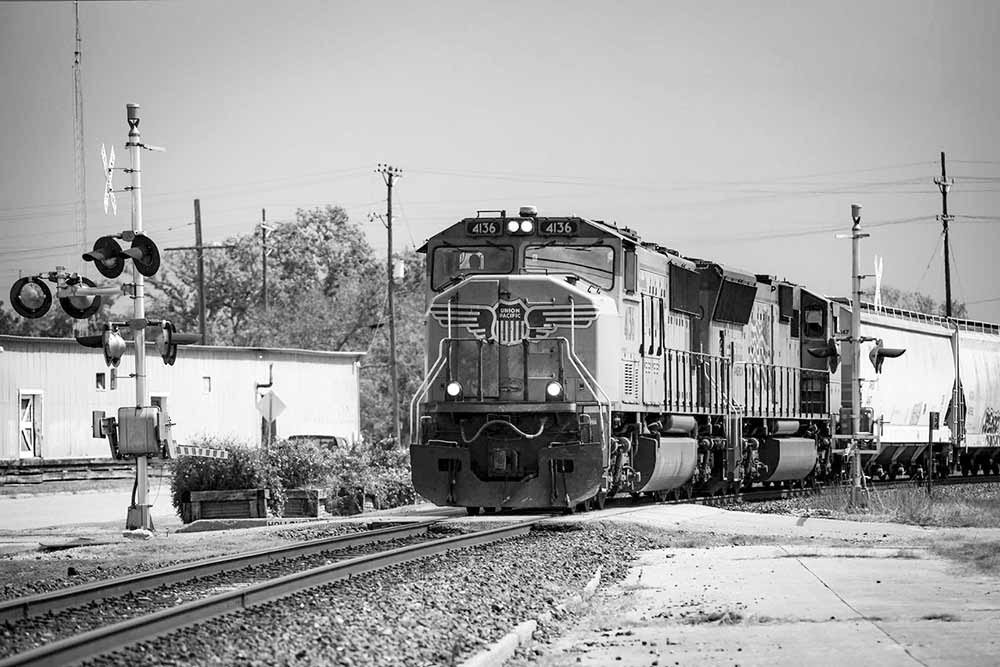
The railroad is central to Navasota's identity.
Photo by Michael Paulsen | Houston Chronicle
The railroad is central to Navasota's identity.
Photo by Michael Paulsen | Houston Chronicle
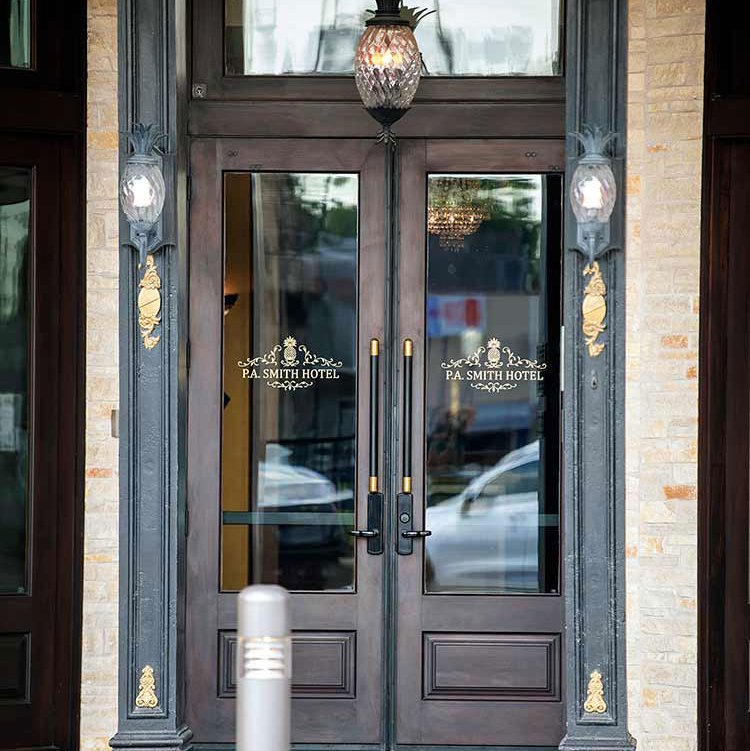
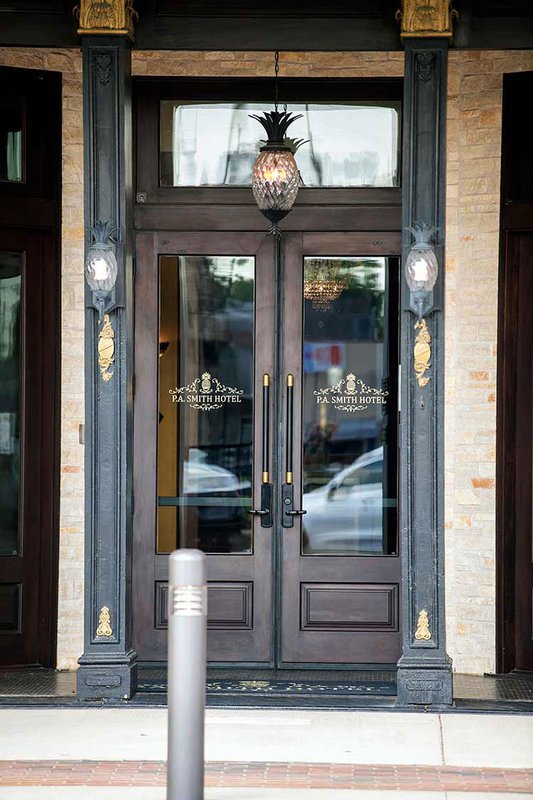
P.A. Smith Hotel
P.A. Smith Hotel
The town was besieged by crime as the result of the new industry. The upscale and recently restored P.A. Smith Hotel pays homage to this history with a speakeasy bar named in honor of Frank Hamer, the lawman who put an end to Bonnie and Clyde's deadly crime spree with a bloody shootout in northeastern Louisiana. In 1908, before his Bonnie and Clyde days, the City of Navasota hired then-24-year-old Hamer as city marshal to rein in crime in the wild city. He spent three years enforcing the law in the once lawless town with controversially harsh tactics.
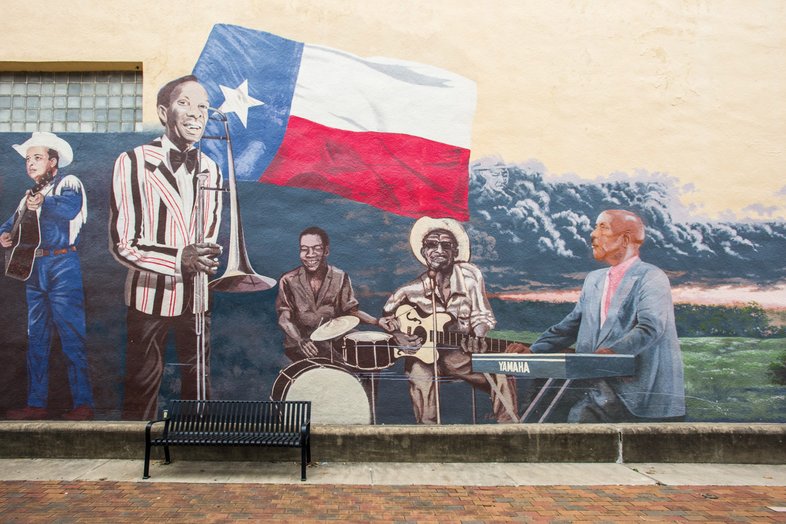
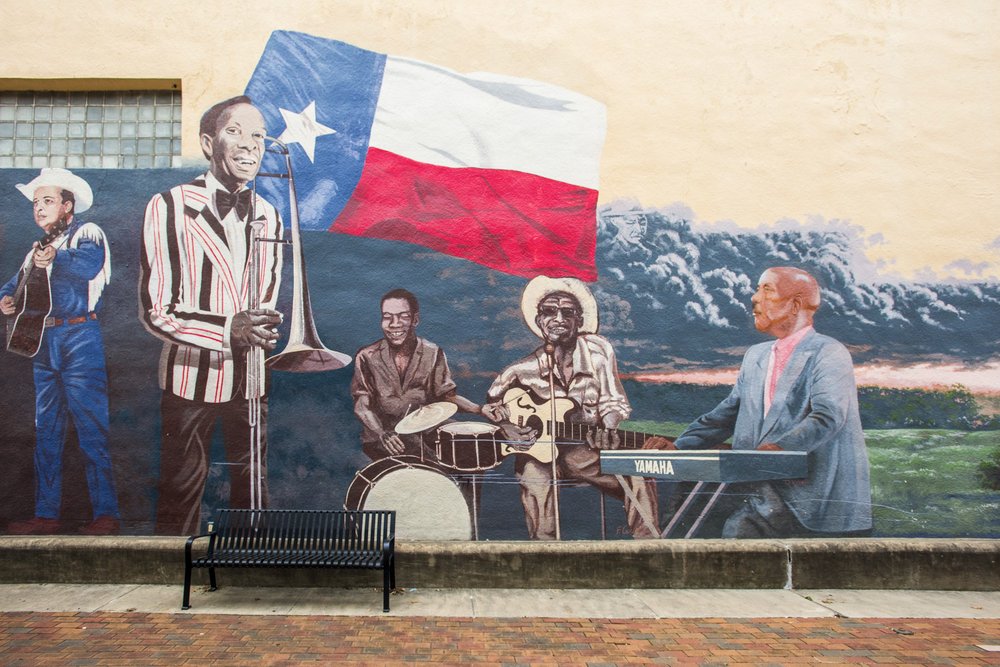
Blues mural in Navasota
Blues mural in Navasota
Blues Capital
Its location at the center of the once-booming East Texas cotton trade means slavery is a part of Navasota's history. This history is also the source of some of the area's most recognizable art. Navasota became known as the Blues Capital of Texas in large part because of Mance Lipscomb, a town native who became one of the genre's most influential artists.
If you'd asked Lipscomb, he would have called himself a songster rather than blues musician. Songsters predate the blues; they were usually Black traveling musicians who sang and strummed ballads that had roots in the work songs chanted by enslaved people. Lipscomb's first album, Texas Sharecropper and Songster, was a breakout hit, and one of Lipscomb's songs was covered by Frank Sinatra. He went on to play with Bob Dylan, Janis Joplin, Muddy Waters and the Grateful Dead. Other blues musicians who called Navasota home include Joe Tex, Milt Larkin and King Cotton.
Musicians who passed through to play the blues include the famous Lightnin' Hopkins and Blind Lemon Jefferson. That blues past is memorialized in Blues Alley, a mural on the side of Navasota's Classic Rock Café. The city is currently working to help revitalize Navasota's musical traditions with Blues Fest held each October.

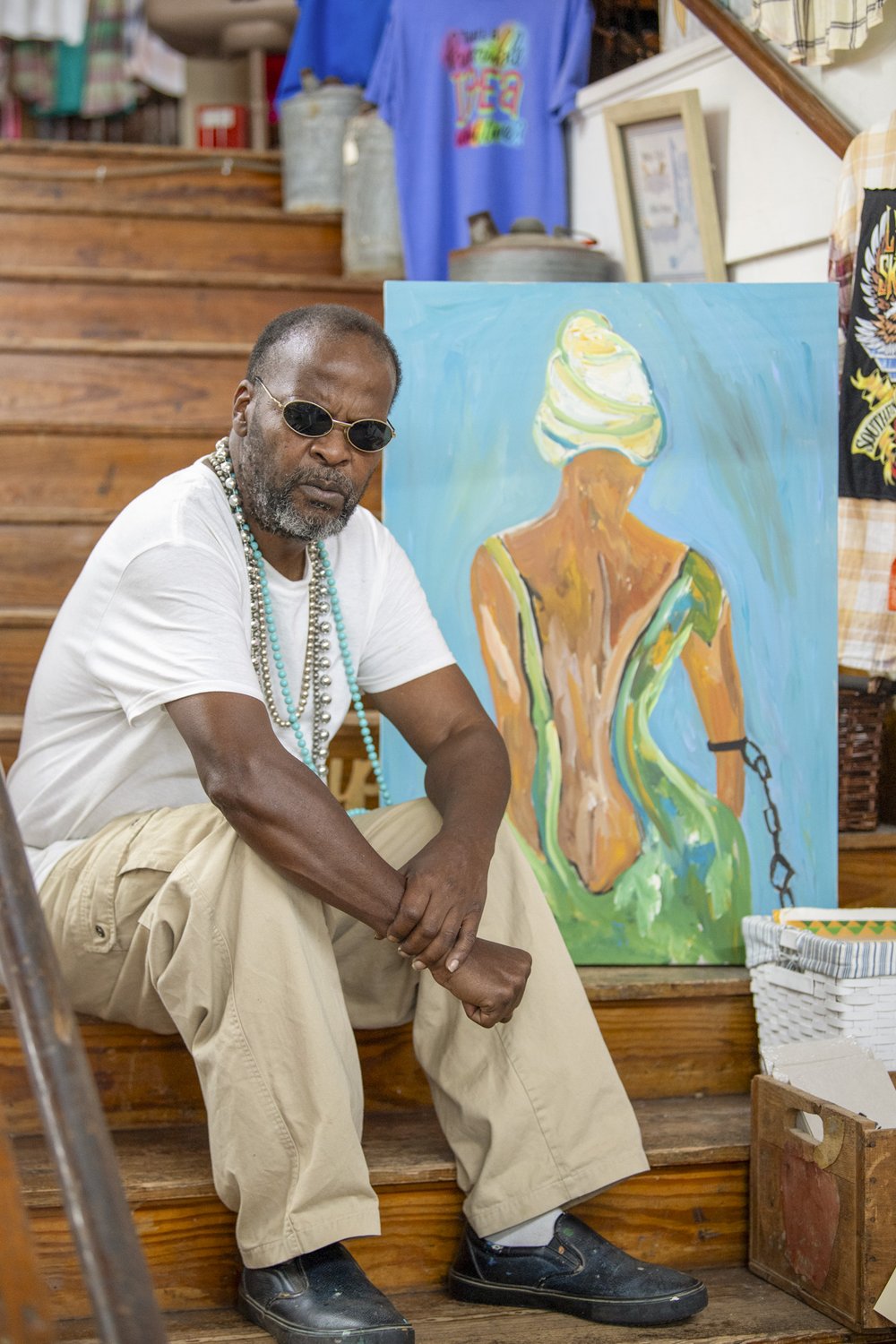
Artist Leon Collins and his work

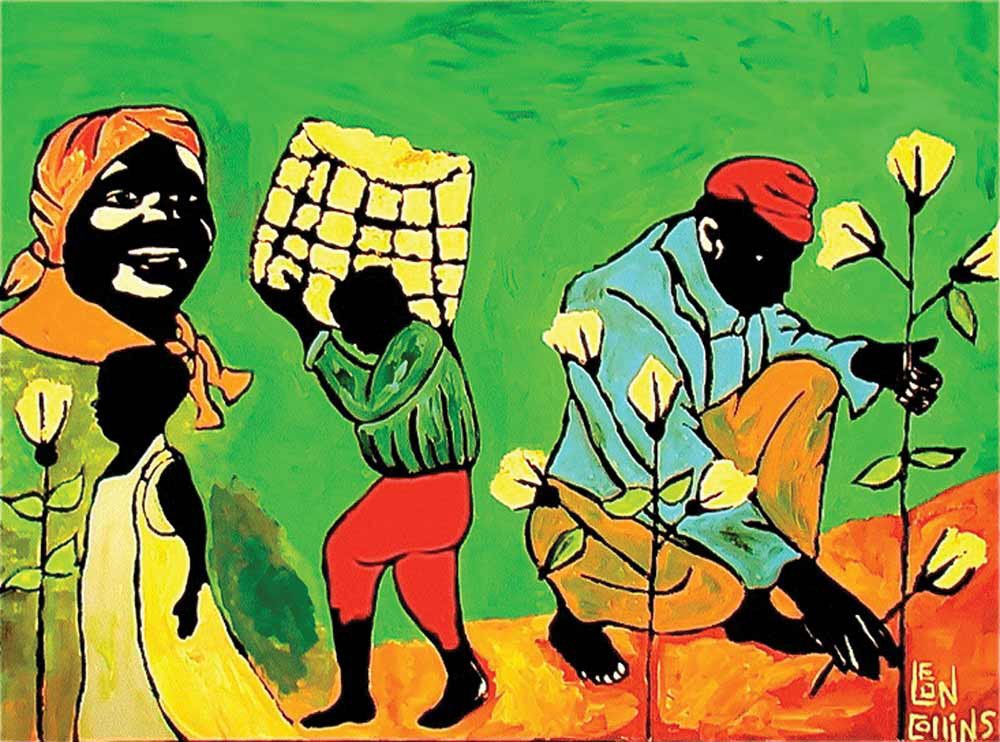
Artist Leon Collins and his work
Artist Leon Collins and his work
Local artist Leon Collins, born in Galveston, moved to Navasota as an adult to be closer to family. He paints people and scenes in blocky shapes with vibrant blue, yellow, orange and green paints. The prolific artist depicts the African-American communities he grew up with, and Collins cites his biggest influences as his grandmother and God. In the painting shown above — Days of Cotton from his exhibit The Color of Life — Collins pays homage to African-American sharecroppers and cotton pickers in his signature style.
On an overcast Saturday in May, he sat on a bench outside Circle P Antiques and Collectibles, near the train tracks. His journey in the art world started as a “treasure hunter,” finding items for another local shop. During that time, that store's owner Duane Garner learned of his paintings and invited him to sell his creations. As I asked the quiet, elderly man about his past and inspirations, the train horn blared. He told me he's gotten used to it.
Where Texas Was Born
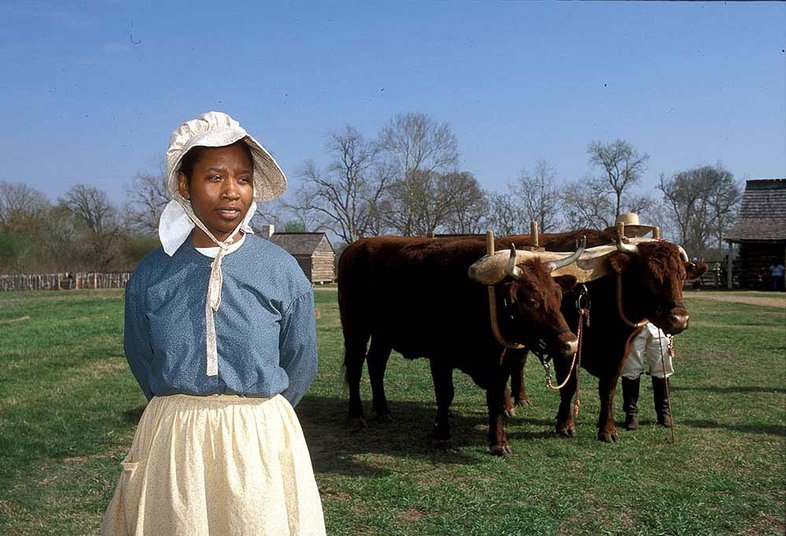
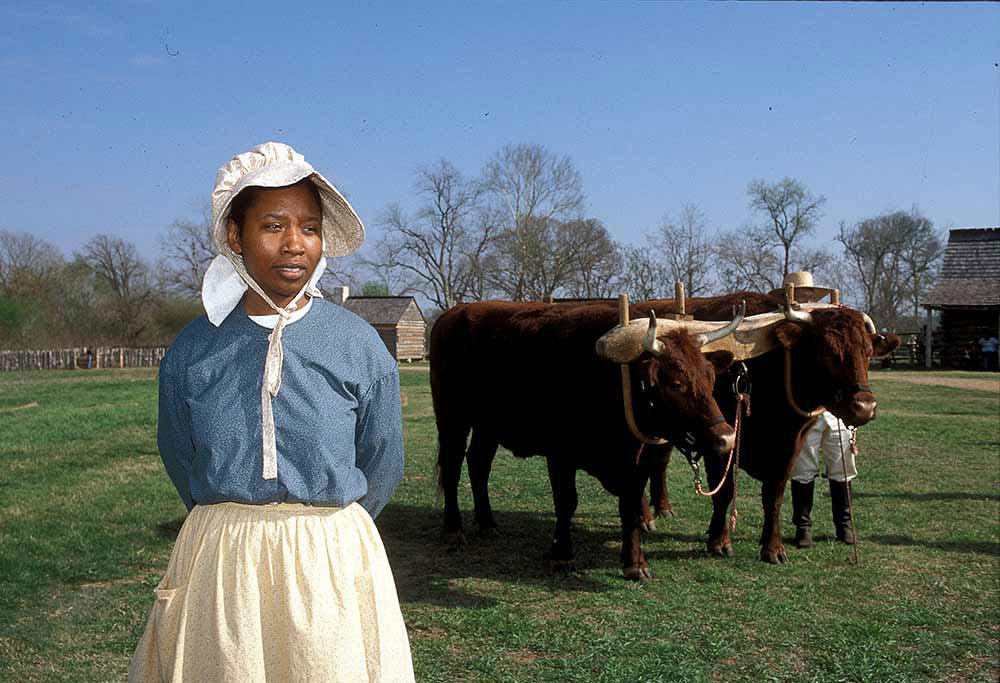
Washington-on-the-Brazos
Washington-on-the-Brazos
Less than a 30-minute drive from Navasota, Washington-on-the-Brazos (where the Texas Declaration of Independence was signed) is getting a $51 million overhaul. “When we're done, this will be a Smithsonian-quality museum,&rquol says complex manager Jon Failor.
In addition to a bronze-cast map of the area within a state-of-the-art visitors center, updates include renovation of the Star of the Republic Museum and reconstruction of the original townsite with recreated streets, eight fully rebuilt structures, and other buildings in various stages of reconstruction to highlight layers of the town's history. Renovations at the Texas Historical Commission site (formerly part of the Texas Parks and Wildlife Department) are slated for completion in fall 2025.
A Place for Wolves
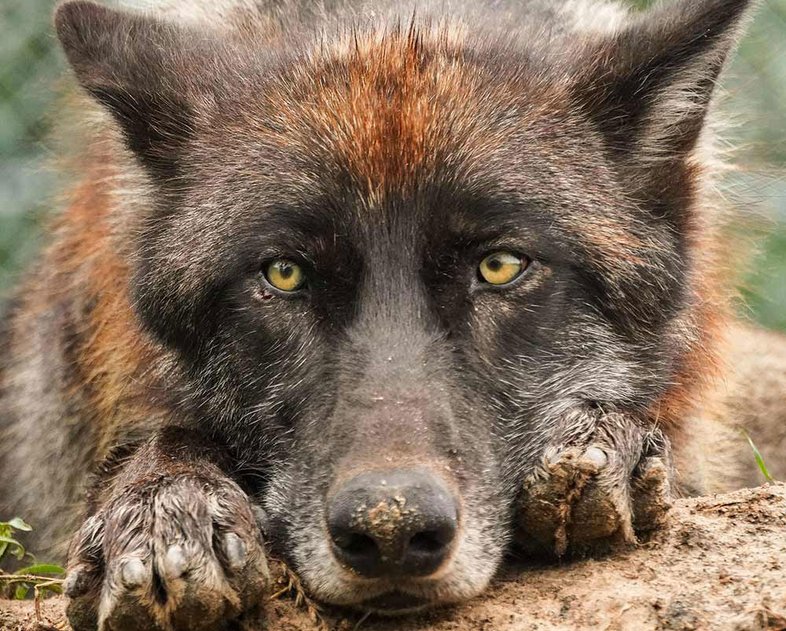
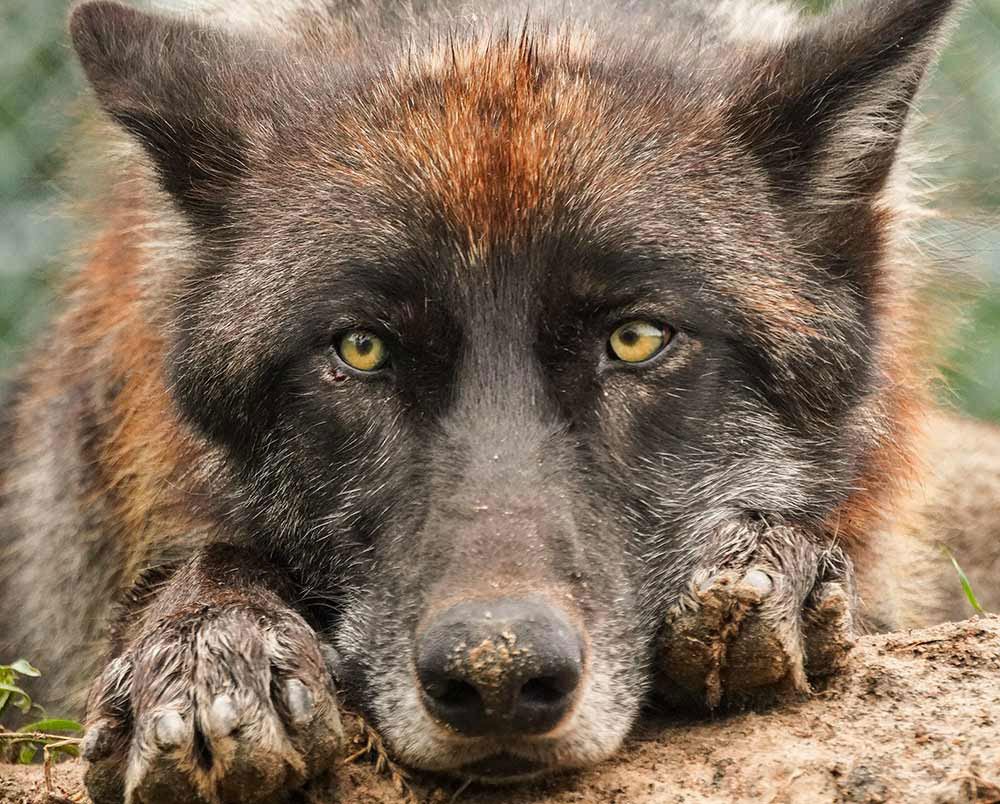
Photo by Claudia Smith | CSS Images
Photo by Claudia Smith | CSS Images
Both the red and gray wolf once called Texas home. Although wolves were effectively eradicated from the Lone Star State in the first half of the 20th century, many East Texans believe they've seen a wolf on their property or roaming a back road in the country. According to Lauren Gaulding, the Saint Francis Wolf Sanctuary staff member who led our early May tour, odds are that if you think you've seen a wolf in Texas, it's probably a dog, coyote or hybridized wolfdog. Or, if it is a wolf, it was probably released from illegal captivity. In fact, most of the wolves and hybrid wolfdogs at Saint Francis, the only USDA-permitted wolf sanctuary in the State of Texas, were formerly illegally owned pets.
On some spring and fall nights, the wolf sanctuary hosts a “howl night” for guests to visit, or even camp overnight, and have the opportunity to sing in chorus with the residents. The sanctuary also offers tours by appointment, during which staff tell visitors about the history of our state's wolves and the personalities of the sanctuary's current lupine residents. One current wolf, McQuade, was named by Navasota's most famous resident, Chuck Norris, in honor of his 1983 film, Lone Wolf McQuade.
More to Do
Paddle the Brazos
Hidalgo Falls is a Class II rapid on the Brazos River that provides thrills for canoeists and kayakers. The Texas Rivers Protection Association has a 13-acre controlled-access property at the falls, open year-round to members. In October, on Columbus Day weekend, the property hosts the Hidalgo Falls River Festival, featuring paddling skills clinics, guided paddling trips and camping open to the public.
Hike the Trail
The town of Richards, 20 miles northeast of Navasota, contains the westernmost trailhead of the state's longest trail network. The Lone Star Hiking Trail twists and turns for 96 miles under tall pines and over palmetto groves.
See Wildlife
Whether you're driving in to Navasota from the north or south, you can experience a Great Texas Wildlife Trail along the way. Both the Brazos Valley and the Washington-on-the-Brazos loops offer multiple wildlife viewing destinations.
